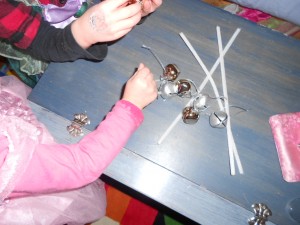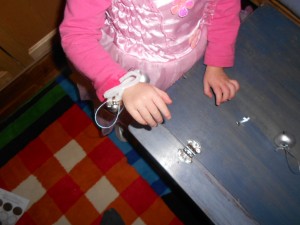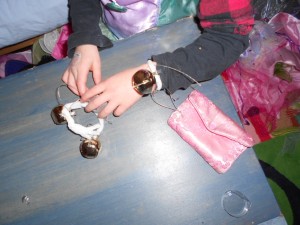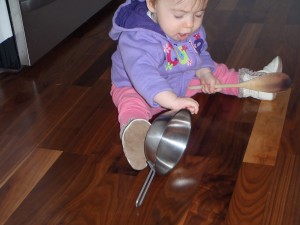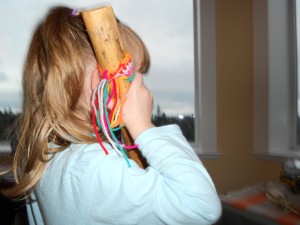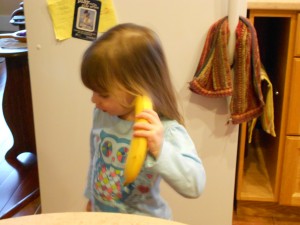Plastic Easter eggs can be used for lots of learning and kindergarten readiness fun. They are just the right size for little hands to shake and explore the sense of hearing.
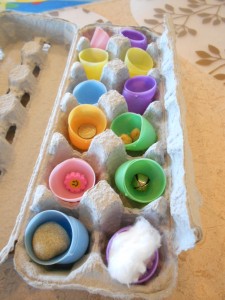 To make some shaker-eggs, tuck something inside that will make noise. I used a bell, some dried beans, a few coins, an Easter bunny fluffy tail, which was just a cotton ball, an eraser, and a small rock. Little Sister helped me close the eggs and then tried to guess what was inside each one. After she played with these for awhile, I asked her if we should make some that matched. After we made another set, then she tried to find the ones that sounded alike. Even though young children have more sensitive hearing than adults, they do not filter out the background noises very well. The sounds of these eggs were quite different, but finding the pairs needed concentration and focus. Listening takes lots of brain power, and apparently, that’s one of the reasons why kids may not respond when we talk to them; our voices are lost in all the other sounds.
To make some shaker-eggs, tuck something inside that will make noise. I used a bell, some dried beans, a few coins, an Easter bunny fluffy tail, which was just a cotton ball, an eraser, and a small rock. Little Sister helped me close the eggs and then tried to guess what was inside each one. After she played with these for awhile, I asked her if we should make some that matched. After we made another set, then she tried to find the ones that sounded alike. Even though young children have more sensitive hearing than adults, they do not filter out the background noises very well. The sounds of these eggs were quite different, but finding the pairs needed concentration and focus. Listening takes lots of brain power, and apparently, that’s one of the reasons why kids may not respond when we talk to them; our voices are lost in all the other sounds.
Sensory input is tremendously important for learning. Brains use the information to interact with and interpret the world. When it comes to the sense of hearing, it often takes a backseat to the sense of sight but sounds condense a lot of meaning. Think of the phone ringing or what ever sound it makes. Usually, when it does, we all respond quickly and sometimes quite hectically, if we can’t find the phone. That one sound can create immediate action. When it comes to kids, the sound of silence can carry a lot of meaning too!
Listening is an important skill and gets better with practice–and play. Some children will play longer with shaker-eggs, some only briefly, but it’s a fun activity for the sense of hearing. Hmm, can we hear the Easter bunny? What sound does he make?

